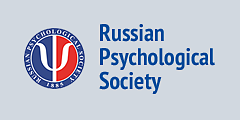
Lomonosov Moscow State University. Head of the Laboratory of Perception.
Moscow, Russia
-
Gender Differences in Interactions with Avatars of Diverse Ethnic Appearances
-
Background. Gender differences exist in almost every aspect of our lives. Individuals have an array of different social expectations with regard to behaviors, communication, appearance, attitudes, and social roles, but these expectations tend to be based on whether the individual is male or female. Currently, many social studies have been done with the help of virtual reality technologies. They have been effectively applied to the study of many social phenomena such as nonverbal communication, social skills training, social anxiety rehabilitation, etc. Recently considerable attention has been paid to issue of gender differences during social interaction with the virtual partners, avatars. However, the question of gender differencesduring interactions with avatars of diverse ethnic appearances has seldom been studied.
Objective. The goal of this study was to investigate the gender peculiarities of interaction with avatars of different ethnic appearances. We used the CAVE virtual reality system to study gender differences in interpersonal distances which were maintained with avatars.
Design. We designed four three-dimensional virtual scenes with avatars of four different ethnic appearances. They were avatars of Slavic, Asian, North Caucasian, and African appearance. All the avatars were male. e participants (who all identified as Russians) were immersed in virtual environments with the help of the CAVE virtual reality system. Their task was to approach the avatar, present herself/himself in any way they wanted, and give instructions for the work. During the task the interpersonal distances between the participants and the avatars were measured. After leaving the CAVE, the participants were asked to fill out a questionnaire assessing the Presence effect.
Results. The results showed gender differences in how much interpersonal distance was maintained: women preferred to keep shorter interpersonal distances with their virtual partners than men did. Moreover, the results showed the impact of ethnic appearance on interpersonal distances. Women approached the avatars of their own ethnic group more closely and kept further away from the avatars of other ethnic groups. Unlike the women, the men stayed the same distance away from the avatars of different ethnic groups. Both gender groups kept equally far away from the avatar of African appearance. Gender differences were also revealed in the participants’ estimates of the Presence effect.
DOI: 10.11621/pir.2018.0414
Keywords: gender differences, interethnic interaction, interpersonal distance, avatar, Presence effect, CAVE virtual reality technology
-
-
The study of ethnic attitudes during interactions with avatars in virtual environments
-
Background. Modern technologies provide a wide range of opportunities for studying different types of social processes and phenomena. Currently many original social studies have been done with the use of virtual reality technologies. The effectiveness of their application has been shown for the study of verbal and nonverbal communication; the processes of ethno-cultural identity; and for teaching social skills, as well as correcting social anxiety and ethnic attitudes. One of the very real question concerning spatial behavior during communication with partners from other ethnic groups, however, has not been studied very much.
Objective. In our study we explored proxemic behavior in subjects’ face-to-face interactions with avatars of in-group and out-group ethnic appearance. Using the CAVE virtual reality system, we studied preferred interpersonal distances in carrying out memory tasks during interaction with the avatars.
Design. Three virtual environments with avatars of different ethnic appearance were developed. Each virtual scene represented a room where three avatars of the same ethnicity were standing. Their appearance was associable with one of three ethnic groups– the Slavic, North Caucasian, or the Central Asian. The participants (all of whom identified themselves as Russians) were immersed in the virtual scenes with the help of the CAVE virtual reality system. They were instructed to keep in mind as many details of the avatars’ appearance as they could.
During the task’s execution the interpersonal distances between the participants and the avatars were registered. After leaving the CAVE, the participants were asked to answer questions about the details of avatars’ appearance, and to fill out a questionnaire assessing the Presence Effect in virtual environments. The identification accuracy of the avatars’ appearance details and the Presence effect were measured. The interpersonal distances were analyzed for the area around the direction of mutual gaze.
Results. The results showed that participants preferred to keep closer interpersonal distances from the avatars of the same ethnic group as their own. During interaction with avatars belonging to another ethnic group, significantly larger interpersonal distances were preferred. A significant correlation between the interpersonal distance and the Presence Effect was also revealed.
Conclusion. Virtual reality technology provides a unique and valuable tool for social researchers, including in ethnic attitude studies. A complex method of measuring interpersonal distances and the Presence Effect allows us to assess the main variables during social interaction with high accuracy. The virtual environments designed for this study can be applied successfully not only for studying proxemic behavior, but also for accomplishing other tasks, such as developing communication skills and forming positive attitudes towards ethnic out-groups.
DOI: 10.11621/pir.2018.0102
Keywords: interethnic attitudes, proxemics, nonverbal communication, compensation effect, mutual gaze, CAVE virtual reality technology, avatar, Presence Effect
-
-
The application of virtual reality technology to testing resistance to motion sickness
-
Background. Prolonged exposure to moving images in virtual reality systems can cause virtual reality induced motion sickness (VIMS). The ability to resist motion sickness may be associated with the level of vestibular function development. objective. The aim of the present research is to study the oculomotor characteristics of individuals whose observation of moving virtual environments causes the VIMS effect. We hypothesized that people who have a robust vestibular function as a result of their professional activity, are less susceptible to VIMS than people who have no such professional abilities. The differences in people’s abilities to resist the effects of the virtual environment may be revealed in the oculomotor characteristics registered during their interaction with a virtual environment.
Design. Figure skaters, football players, wushu fighters, and non-trained people were tested. e CAVE virtual reality system was used to initiate the VIMS effect. three virtual scenes were constructed consisting of many bright balls moving as a whole around the observer. e scenes differed in the width of the visual field; all balls subtended either 45°, 90° or 180°.
Results. The results showed more active eye movements for athletes compared to non-trained people, i.e. an increase in blink, fixation, and saccade counts. A decrease in saccadic amplitudes was revealed for figure skaters. These characteristics were considered specific indicators of the athletes’ ability to resist motion sickness.
Conclusions. It was found that the strength of the VIMS effect increased with the increasing width of the visual field. The effectiveness of virtual reality and eye-tracking technologies to test the VIMS effect was demonstrated.
DOI: 10.11621/pir.2017.0310
Keywords: virtual reality technology, motion sickness, vestibular dysfunction, vection illusion, eye movement characteristics, professional abilities of athletes
-
-
Postnonclassical methodology and application of virtual reality technologies in social research
-
The postnonclassical paradigm has increasingly become a conceptual basis for social research in various fields in an attempt to overcome the limitations of the classical and non-classical approaches. Subjects of social research activities require changes in the paradigm at all levels of research: from the statement of the problem to the elaboration of the appropriate methods and the analysis of the research data. The search for new research methods, technologies and techniques plays a crucial role in this process. One of the most promising methods that has rapidly developed in recent years is the technology of virtual reality (VR). This technology is being widely applied to both natural science and social science research. In this article, we examine the possibilities of using VR technology for the resolution of current tasks in social research from the perspective of the postnonclassical approach.
DOI: 10.11621/pir.2015.0405
Keywords: postnonclassical paradigm, social research, virtual reality technology, ethnic and racial attitudes, verbal and non-verbal communication, avatar
-
-
An investigation of 3D images of the simultaneous-lightness-contrast illusion using a virtual-reality technique
-
This article investigates the problem of lightness perception. To clarify the role of depth in lightness perception two current models—the albedo hypothesis and the coplanar-ratio hypothesis—are discussed. To compare them the strength of the simultaneous-lightnesscontrast (SLC) illusion was investigated as a function of three-dimensional (3D) configurations of the test and background squares. In accordance with both hypotheses the changes in the depth arrangements of the test and background squares should result in changes in the illusory effect. However, the reasons for and the directions of these changes should be different. Five different types of 3D configurations were created in which the test squares were tilted at different angles to the background squares. A virtual-reality technique was used to present stereo pairs of different 3D configurations. Thirty-seven observers took part in the experiment. The method of constant stimuli was used to obtain psychometric functions. The displacements of these functions for 3D configurations in comparison with the 2D configuration allowed the estimation of illusion strength. The analysis of individual values of illusion strength revealed two groups of subjects. For the first group (38% of all participants) the strength changed insignificantly depending on the 3D configurations. For the second group (62% of all participants) significant differences were obtained for those configurations in which the test and background squares were perceived as differently illuminated. The changes in the SLC illusion strength for the second group were consistent with predictions made by the albedo hypothesis. Thus, it seems that the perceived illumination of a surface should be considered the main parameter for lightness estimations in 3D scenes.
DOI: 10.11621/pir.2013.0305
Keywords: perception, visual illusions, lightness, perceived illumination, albedo hypothesis, coplanar-ratio hypothesis, virtual-reality technology
-
-
Automated real-time classification of functional states: the significance of individual tuning stageGalatenko, V.V.; Livshitz, E.D.; Chernorizov, Alexsander M.; Zinchenko, Yu. P. ; Galatenko, A.V.; Staroverov, V.M.; Isaychev, S.A.; Lebedev, V.V.; Menshikova, G.Ya.; Sadovnichy, V.A.; Gusev, A.N.; Gabidullina, R.F.; Podol’skii, V.E.PDF HTML18828“ CITE
Vladimir V. Galatenko, Evgeniy D. Livshitz, Alexander M. Chernorizov, Yury P. Zinchenko, Alexey V. Galatenko, Vladimir M. Staroverov, Sergey A. Isaychev, Vyacheslav V. Lebedev, Galina Ya. Menshikova, Alexey N. Gusev, Ekaterina M. Lobacheva, Rozaliya F. Gabidullina, Vladimir E. Podol’skii, Victor A. Sadovnichy (2013). Automated real-time classification of functional states: the significance of individual tuning stage. Psychology in Russia: State of the Art, 6(3), 40-47
copied
-
Automated classification of a human functional state is an important problem, with applications including stress resistance evaluation, supervision over operators of critical infrastructure, teaching and phobia therapy. Such classification is particularly efficient in systems for teaching and phobia therapy that include a virtual reality module, and provide the capability for dynamic adjustment of task complexity.
In this paper, a method for automated real-time binary classification of human functional states (calm wakefulness vs. stress) based on discrete wavelet transform of EEG data is considered. It is shown that an individual tuning stage of the classification algorithm — a stage that allows the involvement of certain information on individual peculiarities in the classification, using very short individual learning samples, significantly increases classification reliability. The experimental study that proved this assertion was based on a specialized scenario in which individuals solved the task of detecting objects with given properties in a dynamic set of flying objects.
DOI: 10.11621/pir.2013.0304
Keywords: human functional state, EEG data, automated classification, individual tuning, stress.
-
-
Unasked questions and unused answers in psychologyPöppel, Ernst; Bao, Ya.; Shihui Han; Ushakov, Dmitry V.; Kovalev, A.I.; Chernorizov, Alexsander M.; Menshikova, G.Ya.; Zaytseva, Yu.S.; Zabotkina, V.I.; Sozinov, A.A.; Gutyrchik, E.PDF HTML25536“ CITE
Pöppel E., Bao Ya., Shihui Han, Sozinov A. A., Ushakov D. V., Kovalev A. I., Chernorizov A. M., Menshikova G. Ya., Zinchenko Yu. P., Zabotkina V. I., Gutyrchik E., Zaytseva Yu. S.. (2013). Unasked questions and unused answers in psychology. Psychology in Russia: State of the Art, 6(3), 4-17
copied
-
Contemporary psychology and cognitive neuroscience create many opportunities for studying the brain functions, but also generate numerous challenges. To date, scientists face common conceptual problems which are relevant to almost every research study/ case such as: classification of functions, unified methodological approaches, explanation of the psychological phenomenon etc. The Sino-German Workshop which took place in Hamburg in 2013 aimed to address unasked questions and unused answers, attracting scientists from different countries and different fields of psychology, neuroscience, medicine, history, and philosophy. The present discussion on the 9 unasked questions was initiated by Professor Ernst Poeppel and was held on by Russian participants from various academic institutions.
DOI: 10.11621/pir.2013.0301
Keywords: contemporary psychology, cognitive neuroscience, 10th Sino-German Workshop Selected Papers
-
-
Technologies of Virtual Reality in Psychology of Sports of Great Advance: Theory, Practice and Perspectives
-
The article is devoted to the problem of using a new experimental technology of “virtual reality” (VR) in psychological research. Methods of virtual reality actively become embedded in tooling of up-to-date experimental psychology. Next in turn there is a task of embedding of VR technologies in various areas of applied psychology like sport psychology. Application of modern computer methods discovers new perspectives for sport psychology.
DOI: 10.11621/pir.2011.0008
Keywords: virtual reality, experimental technology, computer methods, sports psychology, psychophysiology
-
-
Facial Expression Recognition with the Use of Chimeric Face Technique
-
The aim of this study was to investigate holistic / feature processing for encoding face expressions employing the chimeric face technique. In the course of our experiment we tested the recognition accuracy of universal and "chimeric" countenance. As the study has revealed there was a considerable difference between distributions of subject responses depending on the localization of expression features (top/ bottom parts of the face). For chimeric face identification accuracy substantially decreased, there were considerable variations in the naming of face expression and the names assigned were hardly dictated by distinguishing features. The changes in recognition of facial expressions may be accounted for by disarrangement in holistic processing of expression encoding.
DOI: 10.11621/pir.2010.0014
Keywords: face expression recognition, holistic / feature processing for encoding face expressions, chimeric face technique, identification accuracy
-
-
Technologies of Virtual Reality in the Context of WorldWide and Russian Psychology: Methodology, Comparison with Traditional Methods, Achievements and PerspectievesZinchenko, Yu. P. ; Chernorizov, Alexsander M.; Menshikova, G.Ya.; Bayakovsky, Yu. M.; Voiskounsky, A.E.PDF HTML42625“ CITE
Zinchenko, Yu.P., Menshikova, G.Ya., Bayakovsky, Yu.M., Chernorizov, A.M., Voiskounsky, A.E. (2010). Technologies of Virtual Reality in the Context of WorldWide and Russian Psychology: Methodology, Comparison with Traditional Methods, Achievements and Perspectives. Psychology in Russia: State of the Art, 3, 12-45.
copied
-
The paper introduces virtual reality systems as a new methodolology of carrying out both traditional and originally designed experimental studies in psychology and in a broader context - in neuroscience. This methodology, often differing from classical approaches toward planning and performing a study in cognitive, social, educational, organizational and numerous other disciplines within psychology, is placed in the context of genuine Russian and at the same time of world-wide psychological theories, conceptions and traditions. Advantages, currently available results, challenges and perspectives of the virtual paradigm in experimental psychology, psychotherapy and psychological rehabilitation are thoroughly described and analyzed. The ideas of immersive virtuality are also shown to play a profound role at diverse levels of innovative learning and teaching, including special, extracurricular, and college education. Besides, applied virtual reality systems are presented as being of serious importance for the university students' training: it is expected that new generations of professional psychologists will use these systems extensively. The multifaceted theoretical activities and applied work of the staff and students affiliated with the Psychology Department, Lomonosov Moscow State University, aimed at development and usage of immersive virtual reality systems are fully presented in the paper.
DOI: 10.11621/pir.2010.0001
Keywords: experimental psychology, neuroscience, psychotherapy, psychological rehabilitation, methodology, virtual reality, immersion, modality, innovative education, motor activity, psychophysics, cognitive psychology
-









